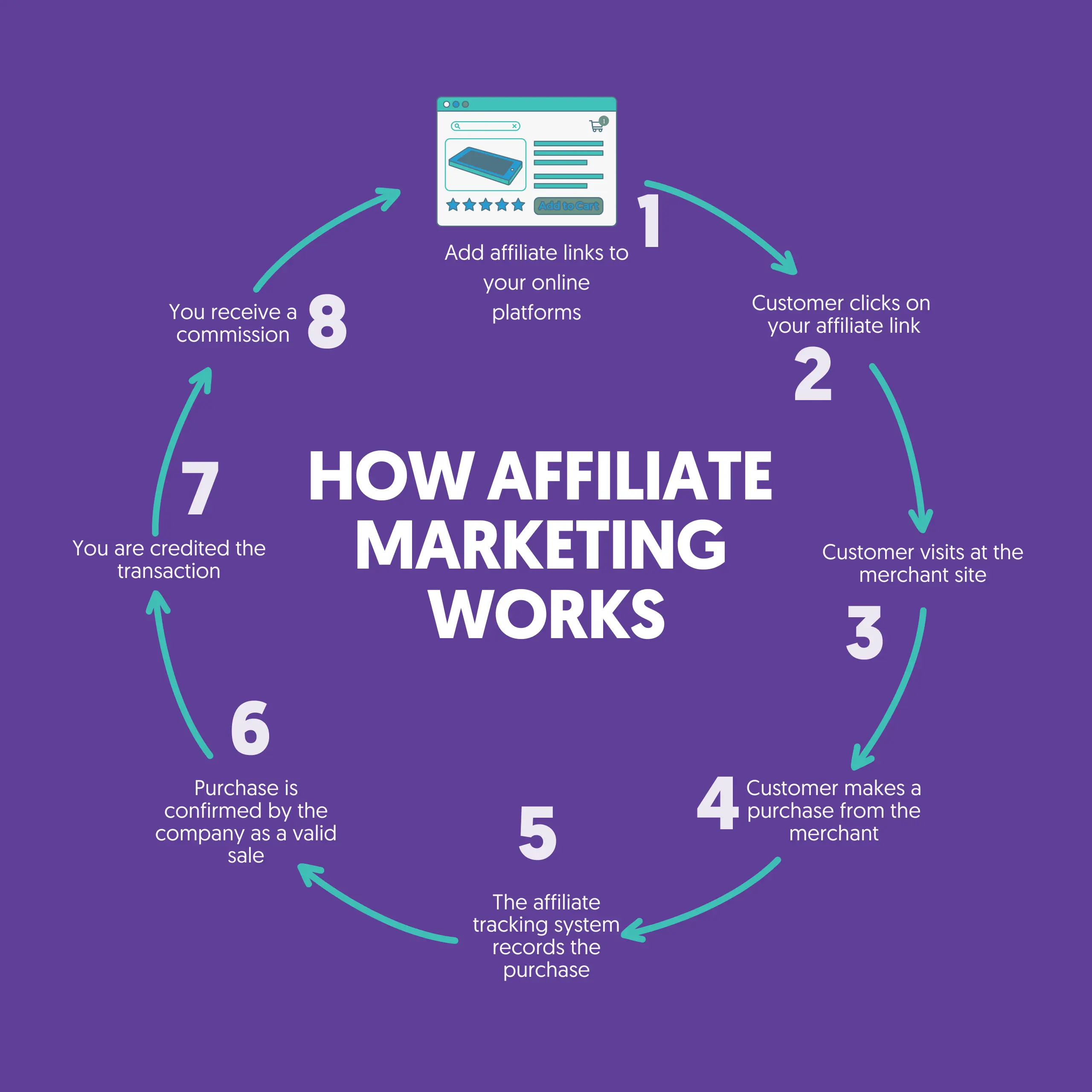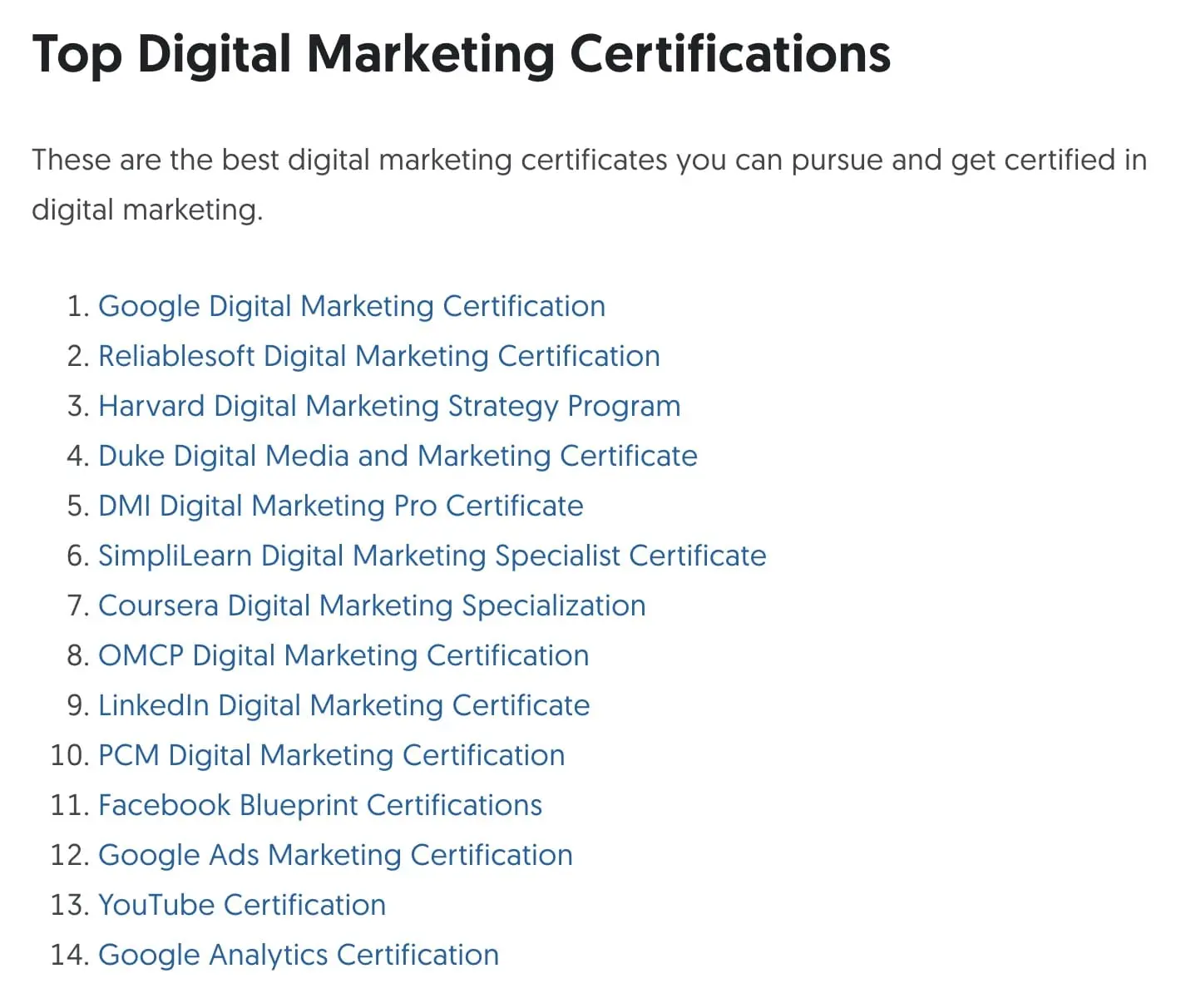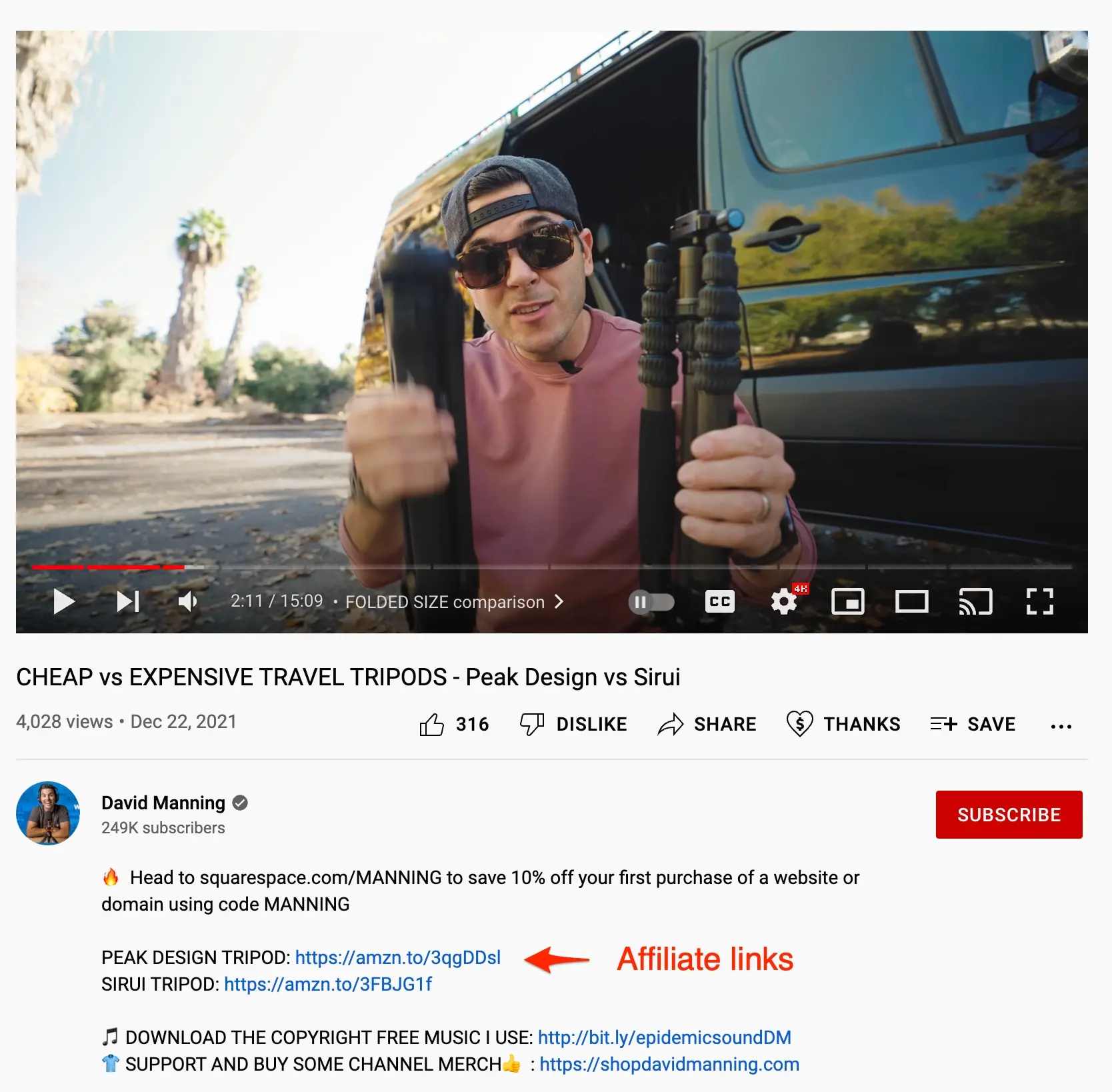Affiliate marketing is one of the easiest ways to make money online, even without experience or budget. Unlike other business models, you don’t need to create products, handle customer service, or invest in inventory. Your job is simply to promote products and earn a commission when someone buys through your unique affiliate link.
Many beginners assume they need money to get started, but in reality, free platforms like YouTube, TikTok, Instagram, and Medium allow you to share affiliate content at no cost.
In this guide, I’ll walk you through the exact steps to start affiliate marketing from scratch, without (almost) any initial investment.
1. Understand How Affiliate Marketing Works
The first step to becoming an affiliate marketer is understanding the business model. While affiliate marketing is simple compared to other online businesses, it’s still important to learn how it works before jumping in.
At its core, affiliate marketing involves promoting products or services and earning a commission for each sale made through your affiliate links. Brands benefit from this because they only pay for actual sales, and you benefit because you don’t need to create your own product.

There are plenty of free resources available, such as YouTube videos and affiliate marketing courses, that can teach you the fundamentals. Taking the time to educate yourself will help you avoid common mistakes and start your journey with confidence.
2. Choose a Niche That Interests You
Once you understand how affiliate marketing works, the next step is to choose a niche for your affiliate products.
Your niche is a specific category that you choose to focus on. You should choose a niche instead of attempting to market a random assortment of products for several reasons.
Concentrating on a specific niche helps you become an expert. It is also easier to establish authority and trust with your audience when you build a consistent history of promoting a particular type of product.
As an expert, your audience will take your offers more seriously. As a result, when you recommend specific products, you can convert your visitors into customers at a much higher rate.
Start by exploring niches that you are passionate about. If you can find a category in which you already have some background knowledge, you can establish yourself as an expert faster.
After you find an interesting niche, you will want to research it thoroughly. When assessing its viability, you want to ensure that there is enough potential traffic for you to generate significant sales.
It is also essential to check the competition. If a niche is too competitive, capturing a large portion of the available traffic will be difficult.
If you find a niche where one or a few competitors dominate the market share, it may be worthwhile to consider a different market.
3. Find Products to Promote & Join Affiliate Programs
Once you’ve chosen your niche, the next step is finding the right products to promote. The success of your affiliate marketing efforts depends heavily on selecting high-quality products that align with your audience’s needs. Here are the key factors to consider:
Product Quality & Reputation – Only promote products that you would personally recommend. A low-quality product can damage your credibility and make it harder to generate sales in the long run.
Commission Rates – Higher commissions mean more earnings per sale. Digital products often offer better commission percentages (sometimes 30-70%) compared to physical products, which typically have lower margins.
Physical vs. Digital Products – Physical products may convert better because people are familiar with them, but digital products like software, courses, and memberships often offer higher commissions and recurring revenue.
To find affiliate products, start by searching for your niche followed by “affiliate programs” (e.g., “fitness affiliate programs”). You can also join affiliate networks like Amazon Associates, CJ Affiliate, or Impact to explore a wide range of offers in different industries.
4. Create Authentic Content
Now that you have the best products for your niche, you can begin creating content.
This is where you will promote your various offers and place your affiliate links.
While not required, it is recommended that you create a website to house your content. Websites are the most effective channel for connecting with your audience and offer the best potential traffic source.
With a website, your content can rank in search engines allowing you to get a passive flow of visitors.
Become an Authority In Your Niche
The key to standing out with your affiliate site is to make it authoritative. You want to be the best place to go for information related to items in your niche.
If you focus solely on selling, customers will pick up on this and will be less likely to respond to your offers.
On the other hand, if you focus on providing value to your visitors, they will be more likely to turn into sales. They will trust your business more and may refer other customers.
Publish The Right Type of Content
Certain types of content work better for establishing authority and promoting affiliate products than others.
One of these is listicle posts. With a listicle post, the content is structured as an ordered list, each section addressing a different point or topic.
Many affiliates use this structure to create “best of articles.” They rank different products in the niche and explain their pros and cons.

How-to guides are another effective type of affiliate marketing content. As their name suggests, this content explains how to perform a particular process from start to finish.
This post is a perfect example.
The main purpose of a how-to article is to guide your audience. As a result, your promotions seem more natural.
Optimize Your Content For SEO
When writing your content, it must be tailored for SEO. Search engine optimization (SEO) is the process of getting your pages to rank at the top of search results in Google and other search engines.
By getting to the top of search rankings in Google, you can get a consistent flow of traffic to your business.
Plus, the visitors from search engines are highly targeted and most interested in your products.
To optimize your content for search engines, start by finding your target keywords. These are the specific terms that customers use when looking for items or information in your niche.
Once you have your target keywords, you can add them throughout your posts.
Strategically Add Affiliate Links
Where you put your links will greatly impact your affiliate marketing business.
Start by adding your links to your most valuable pages. Typically, these are the pages with the highest traffic.
Don’t get caught up in adding links to all of your pages. It will take time for some of them to start seeing visitors.
Once your site gets more traffic, you can add the link to the other pages.
Placing your links toward the top of the content is generally a good idea. Not all your readers will make it to the end of your content before leaving the page.
Another approach is to use links within the context of your writing. You can naturally insert a link into the text when writing about your affiliate products. These links work well with listicles and how-to posts.
For all text-based links, make them easily distinguishable so that users do not pass over them.
You can also try adding affiliate banners to the top of your pages or sidebar. Avoid using too many banners, as it can overwhelm the user and make it seem that you are more interested in pushing products than providing help.
Affiliate Disclosure
It is important to inform your users that your website contains affiliate links. This is a legal requirement as you must disclose that you may be compensated for sales resulting from link clicks.
This message doesn’t need to be extensive. A short sentence at the top of the article or in your sidebar will do.
In addition to this message, your website should have a disclaimer policy. Here, you can give more details about your affiliate arrangements and the fact that you may be paid to market the products.
5. Drive Free Traffic To Your Affiliate Links
Along with generating organic traffic, you need to have an audience of your own.
Having an audience helps establish authority and ensures that you always have a group of interested prospects to market to.
Growing an audience is also important for gaining access to affiliate programs. Many high-commission programs do not accept low-traffic websites.
Your website is not the only tool for growing your audience. Here are some of the other ways you can build an online presence as an affiliate:
YouTube

With YouTube, you can create videos about products users might enjoy. Videos are highly engaging and help build a strong connection with your viewers.
You can also use this channel to generate sales by adding affiliate links to your video descriptions.
Facebook groups
Facebook groups are another great way to connect with potential customers. Find some groups related to your niche and start commenting on posts and making your own.
As you establish yourself in the community, you can start spreading the word about your affiliate products.
Your Facebook groups may not be the best place to add links, as many groups ban such behavior.
Another way to build an audience is through email. Email remains one of the best ways to connect with people, as many open their email daily.
With a list of people subscribed to your newsletter, you can send targeted messages based on their interests.
This will increase trust and engagement. As people get used to your valuable content, you can direct them to your affiliate products.
6. Optimize & Scale Your Earnings
Once you start making commissions, the key to increasing your earnings is identifying what works and scaling your efforts.
Start by tracking your performance using tools like Google Analytics or affiliate dashboards. Identify which content, traffic sources, and products generate the most conversions, then focus on creating more of that high-performing content.
For example, if a specific blog post or YouTube video is driving most of your affiliate sales, consider updating it with fresh information, creating similar content on related topics, or turning it into a different format like an email newsletter or social media post. This way, you maximize the impact of what’s already working instead of starting from scratch.
7. Avoid Common Mistakes Made By Beginners
Here are some common mistakes you should avoid when getting started with affiliate marketing.
Creating a Website for The Sole Purpose of Affiliate Marketing
Your website should not exist just to advertise products. If you want to generate sales, your site must provide real value beyond just affiliate links.
Google’s Reviews Update (now part of Google Core Updates) has made it clear that search engines don’t favor thin affiliate sites that only exist to promote products. Sites that lack original, helpful content struggle to rank and attract organic traffic.
To overcome this, focus on creating in-depth, helpful content that genuinely assists your audience. Instead of just publishing product reviews filled with affiliate links, consider:
- Writing how-to guides and tutorials related to your niche
- Sharing case studies or personal experiences with the products
- Creating comparison articles that offer real insights beyond basic product specs
- Including original images, videos, or data to make your content unique
- Selling your own products (either physical or digital)
Being Too Pushy With Affiliate Offers
We touched on this a bit earlier, but reiterating it is important. You will win customers by providing value and establishing yourself as a reliable source of information.
If you market too aggressively, you will quickly push your audience away.
Promoting Low Commission Programs
Affiliate marketing can be very profitable, but to achieve this, you need to join the right affiliate programs.
If you join programs that don’t pay good commissions, it will be much more difficult for you to find success.
Not Measuring Performance
Affiliate websites require consistent optimization, just like any other site. If you try to simply throw up a few posts and links without any ongoing work, you will be disappointed in the results.
By monitoring your site, you can understand what works well and what does not. You can then test new strategies until you get the desired results.
Giving Up Too Early
Many new affiliate marketers make the mistake of giving up too soon. It will take time to get enough traffic to start making good money.
You won’t see your true profit potential until the business has a chance to grow and you learn how to optimize your affiliate marketing tactics.
Not Treating Affiliate Marketing As a Business
Above all, it is essential not to treat affiliate marketing like a get-rich-quick scheme.
If you want to be successful, you must treat it like a real business.
Start by following all the steps detailed in this guide and choosing the best niche and programs.
If you monitor your performance and focus on providing value as much as selling, you can earn a solid income with affiliate marketing.



